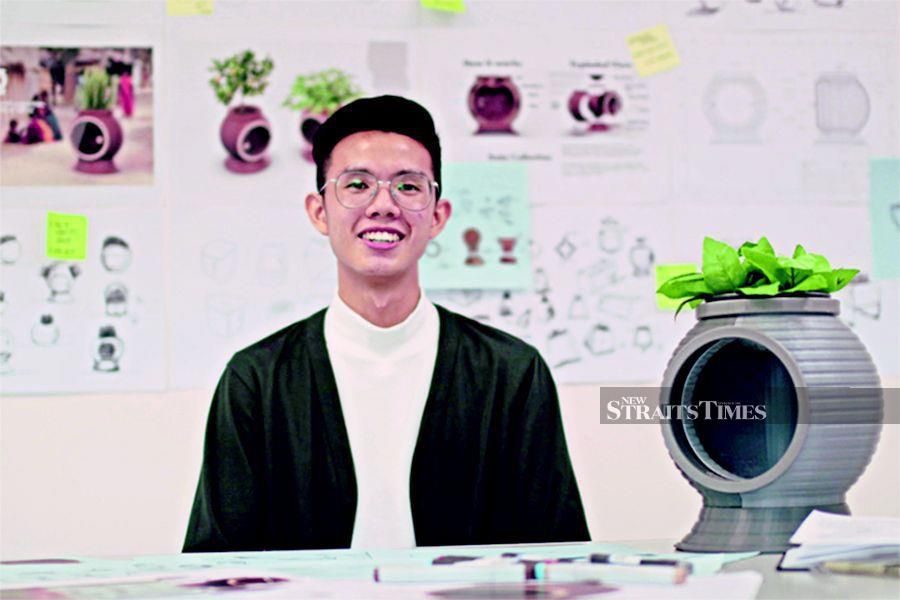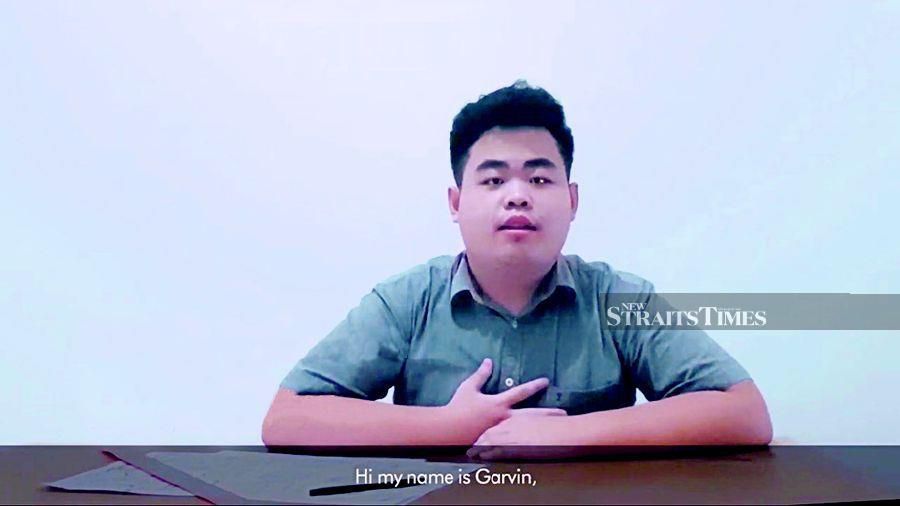Two bright sparks go old-school to help those in rural areas store food for longer periods without electricity
DESPITE modern advances and globalisation, many in the rural areas are deprived of basic facilities, even something as commonplace as electricity.
With no access to power, long-term food storage is impossible. Recognising this dilemma, two individuals came up with an invention and indirectly turned the situation into an opportunity.
KEEPING FOOD COOL
The invention by Kuan Weiking, 23, and Theodore Garvindeo Seah, 20, is a sustainable cooler "refrigerator", which runs without using electricity.
Calling it KUNO, the contraption was named National Winner of the James Dyson Award 2020 (Malaysia), an International design competition organised by James Dyson Foundation. The invention is now in the running for one of the Top 20 global finalist positions.
"Being able to experience this is truly an honour and a blessing," said Kuan.
"To design is my passion, but to design to effect change is my ultimate goal. What makes me happy in this journey is sharing what I have, and love doing, with the world."

Both Kuan and Seah are Product Design students at Asia Pacific University of Technology & Innovation (APU).
They hope that their invention will result in a sustainable product line that will also provide job opportunities for local pottery makers.
"We are thankful to be given this opportunity to help local communities and make a positive impact on the environment. This achievement has motivated us to design more solutions for society," said Seah.
THE CHALLENGES
The road to their success has not been an easy one. Before the Movement Control Order (MCO), they would meet up regularly for discussions. With the MCO and subsequent restrictions on movement in place in the city, their endeavours had to be pursued virtually.
Online discussions, according to Kuan, were difficult and "a pain", especially when it came to technical aspects, designs and mockups.
They were also unable to test their initial product with actual materials due to movement restrictions involving their supplier.
"We were dependent on 3D computer-aided design (CAD) modelling and 3D printing for speculation and estimation," explained Kuan.
SPARK OF SUCCESS
The idea to create the cooler fridge came to Kuan and Seah after reading about the hardship faced by the indigenous and impoverished communities in rural areas.
"Electricity was sorely lacking. It's a basic need. No electricity means no fridge. How are these people going to keep their food fresh for a longer period of time?" asked Kuan.
After months of research, brainstorming and finding solutions, they came up with an eco-friendly alternative refrigeration system that requires no electricity.

"It functions based on the evaporation theory. When certain conditions are present, prolonged shelf life of food in a hot and dry climate is possible.
"The conditions include non-stagnant air, enough surface area to allow optimum evaporation rate and humidity," said Seah.
The invention, KUNO, comprises a porous outer earth clay wall and adopts evaporative cooling techniques that bring the temperature of the chamber down, ultimately cooling the food and keeping it fresh.
INIMITABLE DESIGN
The technique utilises a bowl where a plant takes root. Regular watering of the plant encourages water flow, which draws heat away from the inner chamber and releases it through the clay.
Besides watering, the plant also recycles every raindrop following the same principle.
Assembly is simple. Underneath the plant bowl is a chamber for both sand and the water to flow through. The outer walls are securely joined together by the bottom base.
"The current model is still a mock-up. We are exploring a stackable solution in future models," said Seah.
Of course, while the invention will not result in freezing temperatures, a cooler storage is now possible for some food items.
"Unfortunately, KUNO is not meant for poultry and seafood storage. Those require much lower temperatures which is not possible with this invention," said Kuan.



